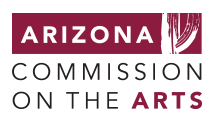Perspectives is an on ongoing series of interviews and check-ins with recipients of our Artist Research and Development Grant (ARDG). Today we speak with 2015 ARDG recipient Jonathan VanBallenberghe of Tucson.
Originally from Juneau, Alaska, Jonathan VanBallenberghe has lived in Tucson, Arizona, since 1999. He received an MFA in poetry from the University of Arizona in 2001, and for the next four years taught high school English at the original BASIS charter school. In 2005 he and his wife, Sharon Wahl, created Open Lens Productions, which has produced independent documentaries, wildlife films, commercials, website videos and fulldome planetarium shows. Jonathan’s passion for documentary filmmaking carries over into his commercial work.
Jonathan VanBallenberghe’s documentary films have screened at festivals including SXSW, Tribeca, the American Conservation Film Festival and the Arizona International Film Festival. The topics of these films range from ostrich farming to gambling addiction to the troubled private life of a self-help guru. Other honors include an Artists Project Grant from the Arizona Commission on the Arts (2004), an Artists New Work Grant from the Tucson/Pima Arts Council (2012), two Gold Addy Awards and the listing of two films in the book AZ100 Indie Film: A State of Arizona Centennial Celebration (2012).
In January 2015, VanBallenberghe was awarded an Artist Research and Development Grant from the Arizona Commission on the Arts in support of his ongoing research in the emerging field of fulldome video production and the creation of local content for the University of Arizona’s brand new fulldome system at their Flandrau Planetarium.
Recently, VanBallenberghe spoke with us about working at the leading edge of a new art form.
How did you get started in fulldome video?
I grew up in Alaska, but found myself at the University of Arizona for graduate school after having fallen in love with language and poetry as an undergraduate. Afterward, I spent some time teaching before starting in on film and video. I found that I was very hungry to teach myself every aspect of the medium: from pre-production and getting ideas, to going out filming and interviewing, and then editing and post-production. I started my own production company to shoot documentaries and commercials, which I’ve now been doing for ten years.
Fulldome started for me in 2011. I was hired by the University of Alaska, Anchorage to make a fulldome video about brown bears for their planetarium. I knew nothing about fulldome, so I had to learn the format with one of the astronomers at the university.
What is fulldome video, and what makes it such a challenging medium?
 Fulldome means recording 360 degree of video– basically a sphere of video–to play in fulldome theaters, planetariums and virtual reality headsets. To shoot fulldome, I use a rig with 6 cameras on it, each pointing a different direction. Eventually, I stitch all those angles together on the computer to form the sphere of video.
Fulldome means recording 360 degree of video– basically a sphere of video–to play in fulldome theaters, planetariums and virtual reality headsets. To shoot fulldome, I use a rig with 6 cameras on it, each pointing a different direction. Eventually, I stitch all those angles together on the computer to form the sphere of video.
The biggest challenge is training your brain how to see in the 360, because there’s no viewfinder for that. You can only see what you recorded when you bring it back to the computer and input it into the sphere. You train your brain by experience–by repeatedly filming, stitching and projecting.
Another huge challenge is the data size. There are 6 hi-definition cameras, each recording on its own memory card. A 3-minute clip, after stitching all the angles together… that can easily be 30GB. For my 25-min show about the bears, it filled a 6TB drive. The size makes storage expensive and also makes it difficult to submit to places that would potentially screen it. When I make a flat-screen documentary, I can submit to film festivals or to TV either on a tape, DVD or as a Quicktime movie file. But with the planetarium format, you actually give them your video in individual frames. So, if there’s 30 frames per second of video, I would- for every second of video I want to submit–give them 30 individual frames as jpegs. I think the bear film was over 60,000 jpegs. Planetarium technicians get that information on hard drive, then they take it and ‘slice’ it for the dome so that each of the dome’s projectors displays a different section of the imagery.
And not even all of the imagery you’ve captured, if I’m understanding your 6-camera rig correctly.
Right. So a planetarium dome is like a gigantic cereal bowl that is inverted and you’re sitting under it. The video goes around you in 360 degrees and up above you. But you’re not seeing the full sphere of video, you’re seeing half of it. A true 360-dome would be completely immersive by being beneath you as well. You can get that effect with Virtual Reality (VR) headsets.
VR headsets are only recently available to the public, but last year the film festivals were starting to have venues for VR films. Sundance had a special showcase and viewing kiosks for 13 VR films. And though filmmakers can now make live-action VR content, there aren’t too many ways people can actually play it. It’s another area where data size is challenging. In theory, I could upload my 360 video to a site, similar to YouTube, and viewers at home with their headset would be able cue it up and explore it in 360 degrees. But streaming internet service “stutters” over large data content, so technicians are trying to figure out how to minimize the size of fulldome video without compromising the quality.
It seems that planetariums are still one of the most accessible ways to see, and work with, this kind of footage. Lucky enough, there happens to be one right in your community in Tucson–the University of Arizona’s Flandrau Planetarium. But they didn’t always have fulldome capabilities, correct?
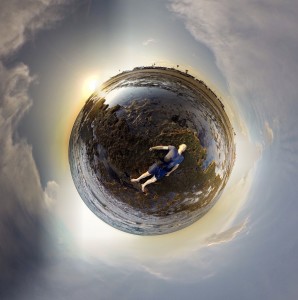 For many years, Flandrau had a system where they could present the night sky, but they were not able to project 360 video. A large donation last summer enabled them to build fulldome capacity, and they’ve said that, so far, public acceptance of the dome has been as great as they could hope for; the public leaves the shows feeling dazzled by the technology. As soon as I read about it, I introduced myself to the director and asked if they might be interested in producing some local shows about our region. They were thrilled–and surprised to find out that there were people in town that can work with them.
For many years, Flandrau had a system where they could present the night sky, but they were not able to project 360 video. A large donation last summer enabled them to build fulldome capacity, and they’ve said that, so far, public acceptance of the dome has been as great as they could hope for; the public leaves the shows feeling dazzled by the technology. As soon as I read about it, I introduced myself to the director and asked if they might be interested in producing some local shows about our region. They were thrilled–and surprised to find out that there were people in town that can work with them.
Our first project is making a 5-minute fulldome “sizzle,” or an exciting short teaser video, that shows off the exciting science happening at the University’s College of Science. You know their Mirror Lab? That produces the largest mirrors in the world? People will be able to go into the planetarium and truly get a sense of the gigantic scale of these mirrors in production and the machinery involved. We’re also doing some filming at Biosphere 2. It’ll feel like you’re actually looking up in the Biosphere: you’ll see clouds, be surrounded by trees, and can look down to see an artificial ocean. It can feel dizzying to–in the blink of an eye–find yourself surrounded as if you were surrounded by the actual dimensions of the habitat. It’s hard to explain, but there’s nothing else like it.
What else are you working on?
This summer, I’m going back to Alaska to make a film about an Inupiaq elder, out in the bush in the very far North. I’m going to be with that community for two weeks, living in a remote cabin, and recording them hunting and fishing. The people feel their way of life is changing, and that they won’t be living that kind of subsistence lifestyle much longer. They can’t hunt on ice when the ice is melting and too thin to walk on. It’s reducing where they can travel. Alaska is drastically receiving the impact from the warming temperatures, and the Inupiaq people are on the front lines. I am capturing a world that is vanishing, a lifestyle that is vanishing.
This is where the technology really inspires me. It has a novelty and entertainment value, like a ride in a theater, but it can also be used to connect with people’s emotions and imaginations so that they can get a better sense of how fragile our planet is, and how fragile some of our communities are.
And you’re hoping that not only will your content be inspiring, but that you might inspire other folks to pick up this medium?
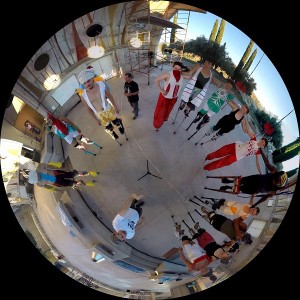 Whenever I’m out in Tucson, filming with the rig, or wherever I am, people come up to me in a way that they don’t usually when I’m filming. It’s because they want to know, “How many cameras are on that rig?,” or “What’s the work flow like?” Kids come up and say, “Is that like Google Earth?” I find myself feeling like an ambassador for the technology, and it’s really fun. I simply try to share my own excitement. I post 360-degree images on social media; people like seeing them even in that format. The flattened version looks like a circle shot with a full fish-eye lens. The most response was to an image of the surf in Rocky Point, Mexico. People aren’t used to seeing a 360 of the ocean.
Whenever I’m out in Tucson, filming with the rig, or wherever I am, people come up to me in a way that they don’t usually when I’m filming. It’s because they want to know, “How many cameras are on that rig?,” or “What’s the work flow like?” Kids come up and say, “Is that like Google Earth?” I find myself feeling like an ambassador for the technology, and it’s really fun. I simply try to share my own excitement. I post 360-degree images on social media; people like seeing them even in that format. The flattened version looks like a circle shot with a full fish-eye lens. The most response was to an image of the surf in Rocky Point, Mexico. People aren’t used to seeing a 360 of the ocean.
There’s immediate community interest, but what I really want to do is give presentations to film students in the program at U of A. I want to convey to them exactly how fast this tech is growing. As part of an agreement with the school’s Hanson Film Institute, I’ll be able to give presentations and work with interns. This way I’ll be able to help grow the community working with this technology, while helping to build audience. I’d like for there to be enough interest for a fulldome film festival in Tucson, either as its own thing or as part of another festival, and I’d like to be involved in developing that. I’m not usually interested in community organizing, but I am when it comes to this.
Fulldome format is going to show us our world in a way that rivals reality. It can take us to parts of our world that we will never get to go to in our lifetime–remote places like Alaska, but also behind the scenes of places in our own backyard, like the Mirror Lab. It has this transporting effect where the lights come up, the screen is filled, and you feel like you had visited that place. I’ve never felt that with any other cinematic experience. When you watch something in a theater, you look to your right, you look to your left, you look behind you, you see people, and the walls. But with the dome, or a VR headset, it takes everything away and limits it to the visuals that surround you. Nothing else has as large a canvas.
For more information about Jonathan VanBallenberghe and his work, click here.
For more information on Artist Research and Development Grants, including eligibility requirements and application guidelines, click here.
More Perspectives

Perspectives: Danielle Foushée
Perspectives is an on ongoing series of interviews and check-ins with recipients of our Artist Research and Development Grant (ARDG). Recently, we spoke with Phoenix-based public artist Danielle Foushée about "Invitation," a piece installed at the entrance to Tempe Beach Park in October 2017.
Read more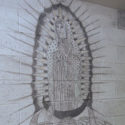
Perspectives: Thomas Eldridge
"There is a kind of spirituality I find inside Madison. Since the first time I laid eyes on one of the murals, I feel that I've been chosen to tell its story. It's like a voice, one that I must serve.... Inside Madison will be a testament to the confined human spirit in all of its anger, confusion, hope... and beauty."
Read more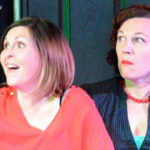
Perspectives: Amy Carpenter and Stacey Reed Hanlon
Perspectives is an on ongoing series of interviews and check-ins with recipients of our Artist Research and Development Grant (ARDG). Today we speak with 2017 ARDG recipient Amy Carpenter and her creative partner Stacey Reed Hanlon.
Read more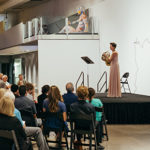
Perspectives: Johanna Lundy
Perspectives is an on ongoing series of interviews and check-ins with recipients of our Artist Research and Development Grant (ARDG). Today we speak with 2017 ARDG recipient Johanna Lundy of Tucson.
Read more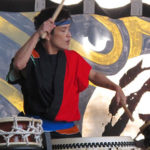
Perspectives: Karen Falkenstrom
Perspectives is an on ongoing series of interviews and check-ins with recipients of our Artist Research and Development Grant (ARDG). Today we speak with 2015 ARDG recipient Karen Falkenstrom of Tucson.
Read more
